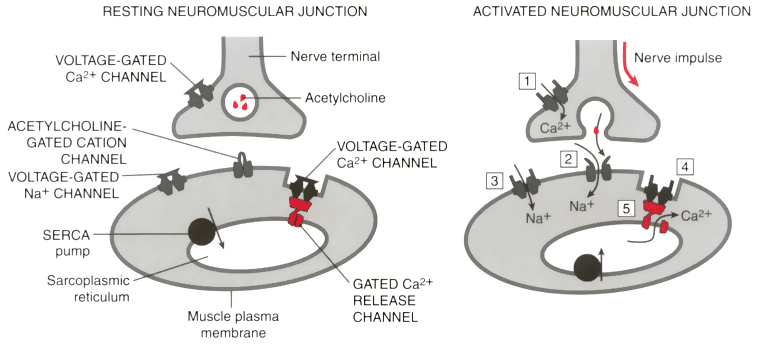 |
 |
Figure 29-1
The key ion channels involved in neuromuscular transmission
and excitation contraction coupling. Nerve impulses arriving at the nerve terminal
activate voltage-gated Ca2+
channels (1). The resulting increase in cytoplasmic
Ca2+
concentration is essential in exocytosis of acetylcholine. Binding
of acetylcholine to postsynaptic nicotinic cholinergic receptors activates an integral
nonselective cation channel, which depolarizes the sarcolemmal membrane (2). Depolarizing
the sarcolemma to threshold activates voltage-gated Na+
channels (3),
which propagate action potential impulses deep into the muscle through the transverse
tubule system. Within the transverse tubule system, L-type voltage-gated Ca2+
channels sense membrane depolarization and undergo a conformational change (4).
A physical link between the α1
-subunit and the ryanodine receptor
is thought to transfer the signal to sarcoplasmic reticulum to induce the release
of stored Ca2+
(5). (Adapted from Alberts B, Bray D, Lewis J,
et al: Molecular Biology of the Cell, 3rd ed. New York, Garland Press, 1994.)

 |
